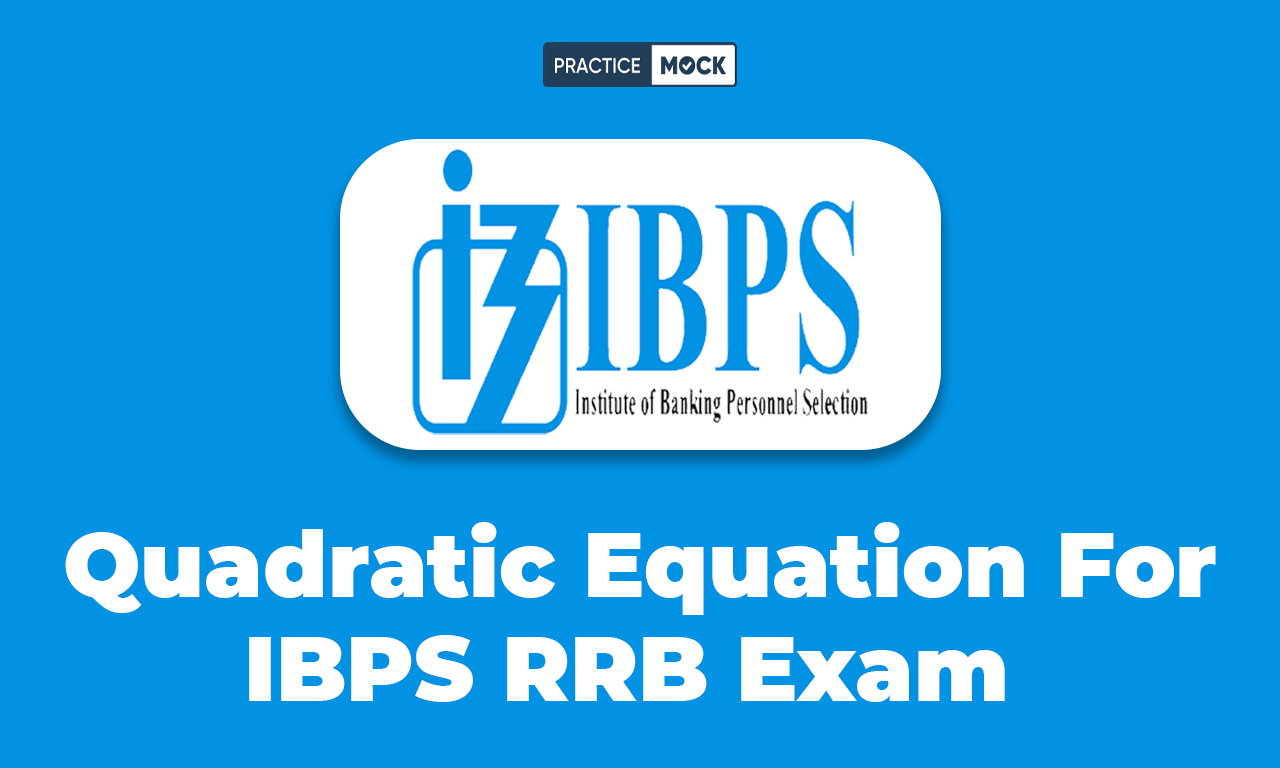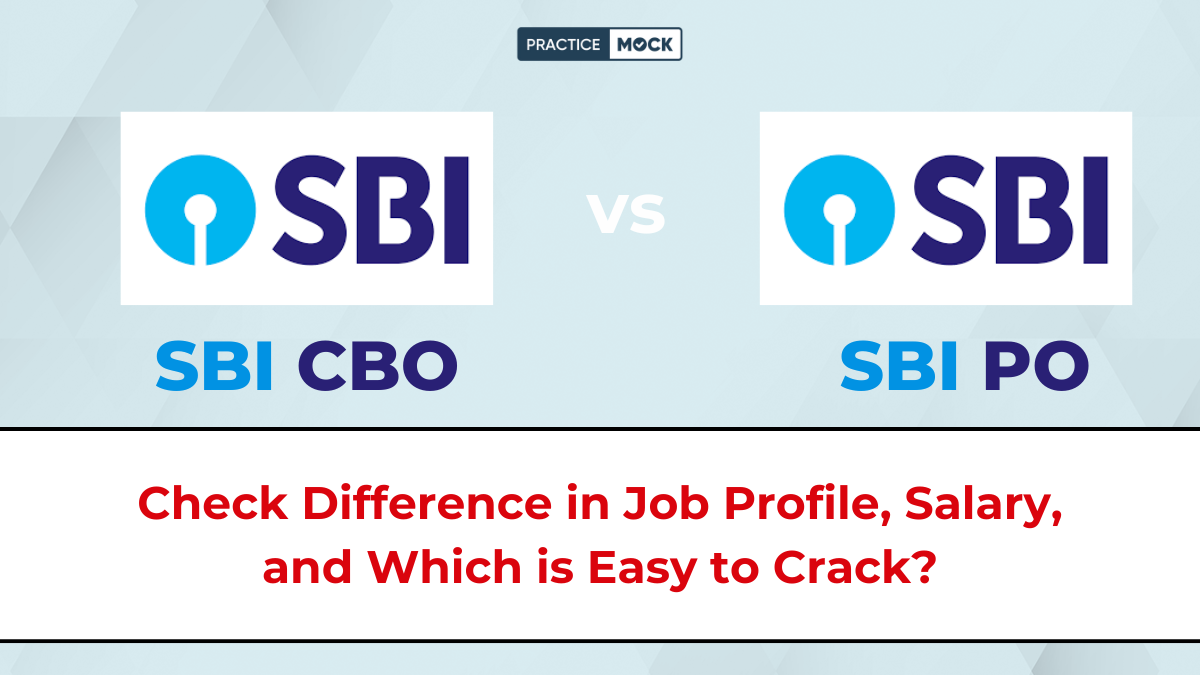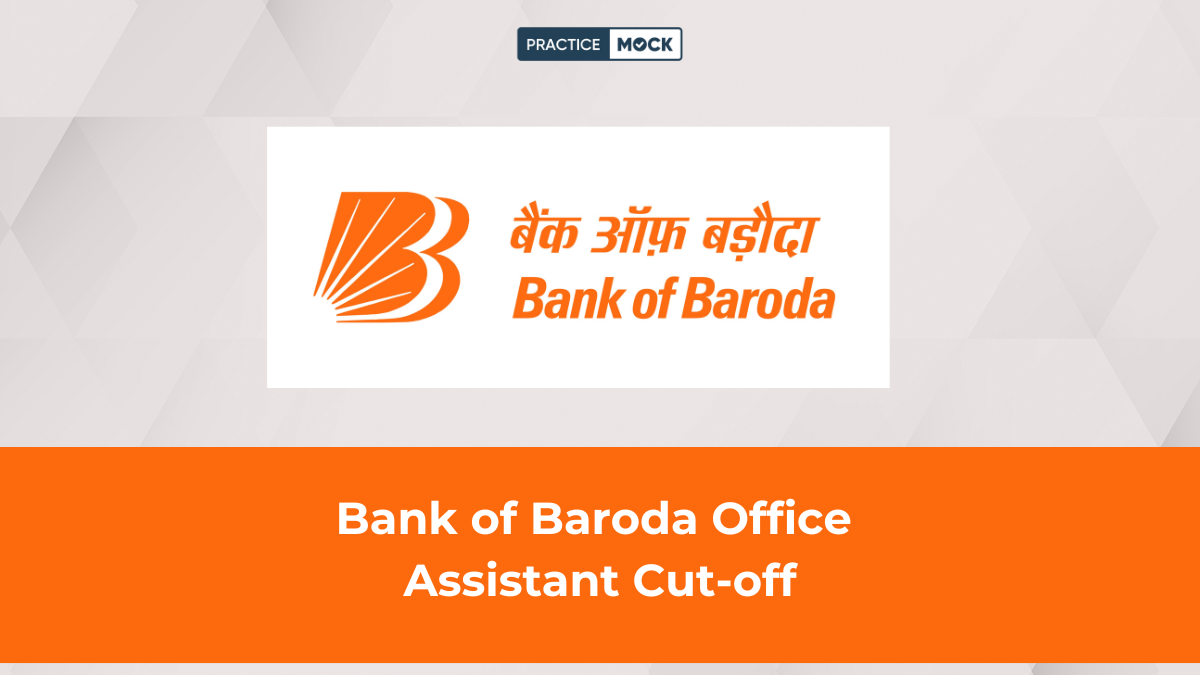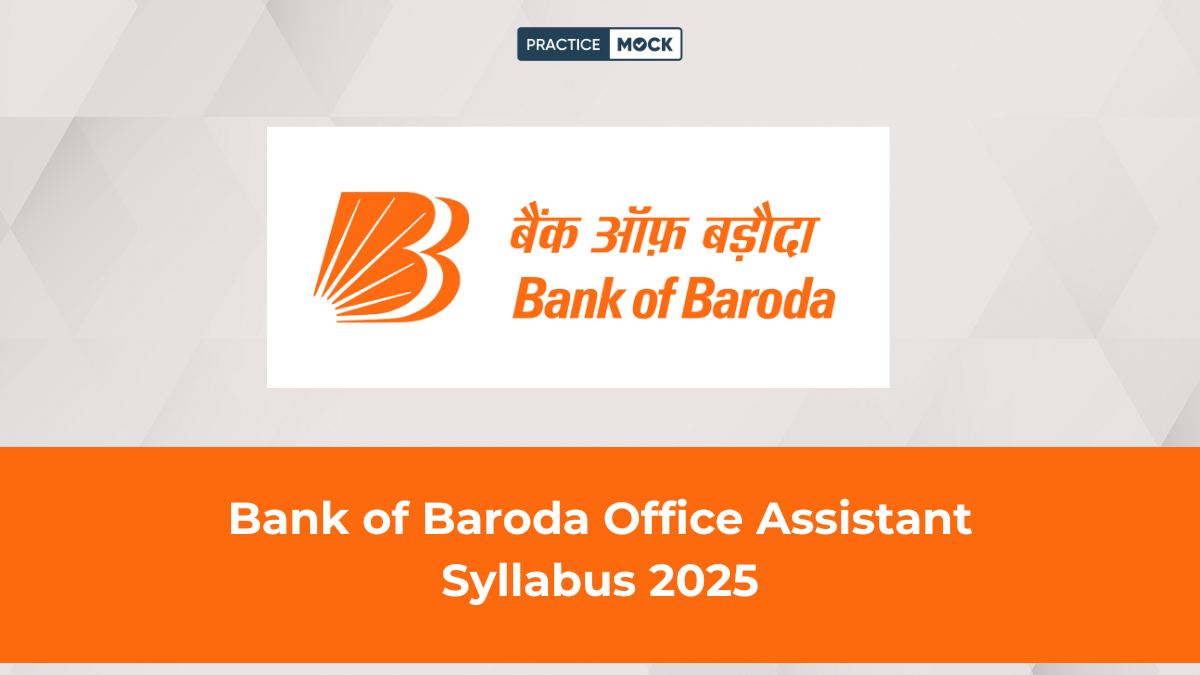Quadratic Equation For IBPS RRB Exam, Check Important Question


Quadratic Equation for IBPS RRB Exam- The topic of quadratic equations is a crucial part of the quantitative aptitude section in various competitive exams, including the IBPS RRB exam and other banking exams. Here we are going to discuss a few Quant Quadratic Equation Practice Questions for the Prelims Exam. These questions will be helpful for the upcoming IBPS RRB 2024 Exam. Though it is one of the trickiest topics from this section, these can be solved with constant practice which is why we are here with these practice questions along with their answers and detailed solutions. Mastering these equations is essential for scoring well in this section. Candidates check all details in the article below.
What is a Quadratic Equation?
A quadratic equation is a second-degree polynomial equation in one variable of the form:
ax² + bx + c = 0
where a, b and c are constants, and the x is variable. The x represents the unknown quantity, and the constants a, b and c determine the shape and nature of the equation.
Important Question for Quadratic Equation
Question 1: In the question, two equations I and II are given. You have to solve both the equations to establish the correct relation between x and y and choose the correct option.
I. 3x2 – 24x + 36 = 0
II. 4y2 = y + 5
A) x > y
B) x < y
C) x = y or the relationship cannot be established
D) x ≥ y
E) x ≤ y
Question 2: In the question, two equations I and II are given. You have to solve both the equations to establish the correct relation between x and y and choose the correct option.
I. x2 – 2x – 63 = 0
II. y2 + 14y + 48 = 0
A) x > y
B) x < y
C) x = y or the relationship cannot be established
D) x ≥ y
E) x ≤ y
Question 3: In the question, two equations I and II are given. You have to solve both the equations to establish the correct relation between x and y and choose the correct option.
I. x2 + 15x + 54 = 0
II. y2 + 20y + 99 = 0
A) x > y
B) x < y
C) x = y or the relationship cannot be established
D) x ≥ y
E) x ≤ y
Question 4: In the question, two equations I and II are given. You have to solve both the equations to establish the correct relation between x and y and choose the correct option.
I. 3x + 7y = 53
II. 7x – 5y = 17
A) x > y
B) x < y
C) x = y or the relationship cannot be established
D) x ≥ y
E) x ≤ y
Question 5: In the question, two equations I and II are given. You have to solve both the equations to establish the correct relation between x and y and choose the correct option.
I. x2 – 27x + 180 = 0
II. y2 – 24y + 140 = 0
A) x > y
B) x < y
C) x = y or the relationship cannot be established
D) x ≥ y
E) x ≤ y
Question 6: In the question, two equations I and II are given. You have to solve both the equations to establish the correct relation between x and y and choose the correct option.
I. x2 – 11x + 30 = 0
II. y2 – 11y + 18 = 0
A) x > y
B) x < y
C) x = y or the relationship cannot be established
D) x ≥ y
E) x ≤ y
Question 7: In the question, two equations I and II are given. You have to solve both the equations to establish the correct relation between x and y and choose the correct option.
I. x2 + 3x – 10 = 0
II. y2 – 5y + 6 = 0
A) x > y
B) x < y
C) x = y or the relationship cannot be established
D) x ≥ y
E) x ≤ y
Question 8: In the question, two equations I and II are given. You have to solve both the equations to establish the correct relation between x and y and choose the correct option.
I. x2 – 5x + 4 = 0
II. y2 + 2y – 3 = 0
A) x > y
B) x < y
C) x = y or the relationship cannot be established
D) x ≥ y
E) x ≤ y
Question 9: In the question, two equations I and II are given. You have to solve both the equations to establish the correct relation between x and y and choose the correct option.
I. 3x + 5y = 21
II. 9x – 2y = 12
A) x > y
B) x < y
C) x = y or the relationship cannot be established
D) x ≥ y
E) x ≤ y
Question 10: In the question, two equations I and II are given. You have to solve both the equations to establish the correct relation between x and y and choose the correct option.
I. 4x2 + 16x – 20 = 0
II. 2y2 + 11y – 6 = 0
A) x > y
B) x < y
C) x = y or the relationship cannot be established
D) x ≥ y
E) x ≤ y
Solution 1: A)
From I:
3x2 – 24x + 36 = 0
3x2 – 18x – 6x + 36 = 0
3x(x – 6) – 6(x – 6) = 0
(3x – 6)(x – 6) = 0
x = 2, 6
From II:
4y2 = y + 5
4y2 – y – 5 = 0
4y2 – 5y + 4y – 5 = 0
y(4y – 5) + 1(4y – 5) = 0
(4y – 5)(y + 1) = 0
y = -1, 5/4
So x > y
Hence, option a.
Solution 2: C)
From I:
x2 – 2x – 63 = 0
x2 – 9x + 7x – 63 = 0
x(x – 9) + 7(x – 9) = 0
(x + 7)(x – 9) = 0
x = 9, -7
From II:
y2 + 14y + 48 = 0
y2 + 8y + 6y + 48 = 0
y(y + 8) + 6(y + 8) = 0
(y + 8)(y + 6) = 0
y = -6, -8
No relation can be established between x and y.
Hence, option c.
Solution 3: D)
From I:
x2 + 15x + 54 = 0
x2 + 9x + 6x + 54 = 0
x(x + 9) + 6(x + 9) = 0
(x + 6)(x + 9) = 0
x = -6, -9
From II:
y2 + 20y + 99 = 0
y2 + 11y + 9y + 99 = 0
y(y + 11) + 9(y + 11) = 0
(y + 11)(y + 9) = 0
y = -9, -11
So x ≥ y
Hence, option d.
Solution 4: A)
From I:
3x + 7y = 53
3x = 53 – 7y
x = (53 – 7y)/3
From II:
7x – 5y = 17
7 × {(53 – 7y)/3} – 5y = 17
371 – 49y – 15y = 51
64y = 320
y = 5
Now x = {53 – 7 × 5}/3
x = 18/3
x = 6
So x > y
Hence, option a.
Solution 5: C)
From I:
x2 – 27x + 180 = 0
x2 – 15x – 12x + 180 = 0
x(x – 15) – 12(x – 15) = 0
(x – 15)(x – 12) = 0
x = 15, 12
From II:
y2 – 24y + 140 = 0
y2 – 14y – 10y + 140 = 0
y(y – 14) – 10(y – 14) = 0
(y – 10)(y – 14) = 0
y = 14, 10
No relation can be established between x and y.
Hence, option c.
Solution 6: C)
From I:
x2 – 11x + 30 = 0
x2 – 6x – 5x + 30 = 0
x(x – 6) – 5(x – 6) = 0
(x – 6)(x – 5) = 0
x = 6, 5
From II:
y2 – 11y + 18 = 0
y2 – 2y – 9y + 18 = 0
y(y – 2) – 9(y – 2) = 0
(y – 2)(y – 9) = 0
y = 2, 9
Hence, option c.
Solution 7: E)
From I:
x2 + 3x – 10 = 0
x2 – 2x + 5x – 10 = 0
x(x – 2) + 5(x – 2) = 0
(x – 2)(x + 5) = 0
x = 2, -5
From II:
y2 – 5y + 6 = 0
y2 – 3y – 2y + 6 = 0
y(y – 3) – 2(y – 3) = 0
(y – 3)(y – 2) = 0
y = 3, 2
So, x ≤ y
Hence, option e.
Solution 8: D)
From I:
x2 – 5x + 4 = 0
x2 – x – 4x + 4 = 0
x(x – 1) – 4(x – 1) = 0
(x – 1)(x – 4) = 0
x = 1, 4
From II:
y2 + 2y – 3 = 0
y2 + 3y – y – 3 = 0
y(y + 3) – 1(y + 3) = 0
(y + 3)(y – 1) = 0
y = -3, 1
Hence, option d.
Solution 9: B)
From I:
3x + 5y = 21
3x = 21 – 5y
x = (21 – 5y)/3
From II:
9x – 2y = 12
9 × {(21 – 5y)/3} – 2y = 12
(189 – 45y – 6y)/3 = 12
189 – 51y = 36
51y = 153, y = 3
x = {(21 – 5y)/3} = 6/3 = 2
So, x < y
Hence, option b.
Solution 10: C)
From I:
4x2 + 16x – 20 = 0
4x2 + 20x – 4x – 20 = 0
x (4x + 20) – 1(4x + 20) = 0
(4x + 20)(x – 1) = 0
x = -5, 1
From II:
2y2 + 11y – 6 = 0
2y2 + 12y – y – 6 = 0
2y(y + 6) – 1(y + 6) = 0
(y + 6)(2y – 1) = 0
y = – 6, 1/2
Hence, option c.
Related Blogs
For More Details Regarding the IBPS RRB 2025 Notification for PO and Clerk, candidates can click on the provided links. Important details of the IBPS RRB PO and Clerk, such as syllabus, exam pattern, cut-off, online application, and previous year papers, are provided.
IBPS RRB Clerk Other Article
| IBPS RRB Clerk Exam Pattern 2025 | IBPS RRB Clerk Syllabus 2025 |
| IBPS RRB Clerk Salary 2025 | IBPS RRB Clerk Cut Off 2025 |
| IBPS RRB Clerk Previous Year Paper |
IBPS RRB PO Other Article
| IBPS RRB PO Salary | IBPS RRB PO Exam Pattern |
| IBPS RRB PO Cut Off | IBPS RRB PO Syllabus |
| IBPS RRB PO Previous Year Question Papers |
Join our exclusive Telegram group where our experts are ready to answer all your queries, guide you in banking exam preparation, and give personalized tips to boost your success. Get access to real-time solutions, expert advice, and valuable resources to improve your study journey. [Click here to join now!]
Quadratic Equation For IBPS RRB Exam FAQ
A quadratic equation is a polynomial equation of the form ax2+bx+c=0ax^2 + bx + c = 0ax2+bx+c=0, where a, b and c are constants, and x is a variable.
The methods to solve a quadratic equation include: Factoring, Using the quadratic formula, Completing the square, and Graphing
Recent Posts
100 + DI Repeated Questions for RRB PO 2025, Check How to Solve It Easily?
In this article we are providing the 100 + DI Repeated Questions for RRB PO…
RRB NTPC Salary 2025: In-Hand, Job Profile, Career Growth
RRB NTPC Salary 2025 details provided in this blog. Candidates can check the In-Hand salary,…
All One Word Substitutions Asked In SSC CGL PDF, Download for Free
In this blog, we have provided All One Word Substitutions Asked In SSC CGL Exams…
Expected Puzzle Questions for RRB PO 2025, Check Tips to Solve Them Easily
In this article we are providing the Expected Puzzle Questions for RRB PO 2025. Candidates…
IDBI JAM 2025 Preparation Resources, Attempt Topic Wise Tests & Mock Tests
In this article we are providing the IDBI JAM 2025 Free preparation resources, Candidates can…
IBPS PO 2025 Notification in August, PO Exam Date Out, Check All Detailes
The IBPS PO 2025 Notification is expected to be released in August 2025. The Probationary…



